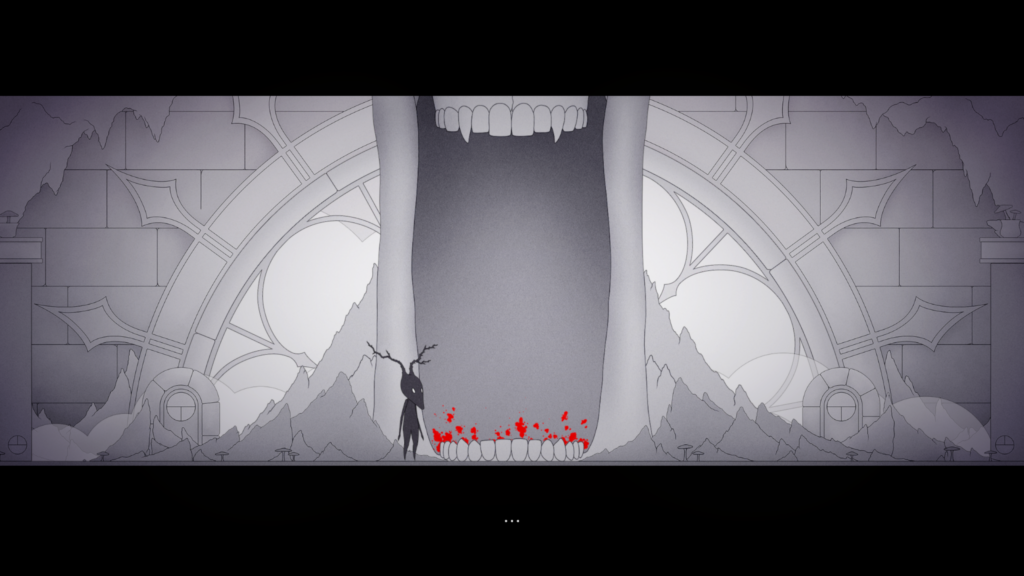You'll love it if:
- You want a short expereince
- You are interested in distinct visual styles
- You like supporting small indie studios
Not for you if:
- Challenging gameplay is a must for you
- Good music contributes to a big part of your experience
I have to confess that I was never an adventure game enthusiast. I did enjoy some of the most well-known titles, like ” The Curse of Monkey Island,” but the sense of fulfillment that resonated with many people when playing this genre always eluded me. The fact that many games operate on what we call “video game logic” for puzzles was also a deterrent to me as a player never to delve deeper.
Skaramazuzu is a game that’s tailor-made for people like me, and it’s a fantastic gateway into the adventure video game genre. Developed by Bleeding Moon, a small studio in Athens, Greece, it offers a short but comfortable experience to adventure newbies. The game’s simple message of familial love and kindness is a reassuring touch, making it a perfect choice for those new to the genre.

TL;DR
Skaramazuzu is a small-length adventure game with a unique artistic style. The visuals are interesting, revolving around the monochrome palette and an arboribus theme. The soundscape is very barren, which makes the unique character voice-acting novel in the beginning but frustrating towards the end. Last but not least, the gameplay revolves around Zuzu trading favours and items in a very matter-of-fact way to progress the story. If you want an adventure game for novices in the genre, then this game is for you.
Story: Never Forgetting
The story of Skaramazuzu develops in a place that is mentioned to be between life and death. Skaramazuzu, or Zuzu for short, is our main character and has only one desire: to retrieve his memories. Being brought by an existence called the “Master” back to the limbo where the story unfolds, Skaramazuzu must open four doors and interact with all the other shades our monochrome environment has to offer.

If you are interested in another game with a drawn 2D visual style, check out the Legendary Hoplite review by Stijn Ginneberge.
Visuals: Symmetry in Trees
Skaramazuzu has a very peculiar visual style. It is a hand-drawn 2D aesthetic made in a monochrome palette with only one exception: the colour red. It reminded me a lot of Felix Colgrave’s latest works, as the shapes that dominate this game consist of straight lines, linear geometry, soft curves, and, last but not least, sharp edges.
A word to describe everything in the world of Skaramazuzu would be arboribus. All the characters take the form of small shadows, with the most striking difference being their heads’ twig-like growths. This is understandable since the theme of trees and growth is prevalent throughout the game.
Skaramazuzu needs help with a very specific component of its visual landscape: animation. Unfortunately, almost all the animations in the game are clunky and lack fluidity. Although the game can paint a very interesting picture, sometimes, the moment that any of the characters need to move or interact with the environment, you are instantly taken out of the gothic visuals, and the immersion is broken.

Gameplay: An Eternal Fetch Quest
Skaramazuzu has a very simple gameplay loop. Our protagonist can only interact or talk with objects and characters. The “Interact” option is used mostly to use items in your inventory, and the “Talk” option is for getting Skaramazuzu’s opinion on something or starting a conversation.
With only these two gameplay mechanics, the whole objective of the game can be described as what is essentially a fetch quest. Talk to characters, get asked to bring an item, find said item, bring it back, and get one of the four keys required to finish the game.
On one hand, this kind of simple linear progression is ideal for an extremely new adventure game player. It is unconfusing and can give them an idea about how the genre usually evolves in a very barebone fashion. On the other hand, for more experienced players, it is undoubtedly a borderline children’s game since the challenge is barely worth burning a lot of grey matter.

Sound: Something Hidden Beneath the Surface
Skaramazuzu made some interesting choices regarding the soundscape. All of the dialogue in the game is “technically” voiced. The reason these quotations exist is that none of them is done in English; the characters use their own made-up sounds to imitate an unknown language, and, partly, that works. It is a novel idea for sure until it just doesn’t work. Unfortunately, the constant looping of the voice sounds and the distinct lack of variety they have, causes the player to become annoyed after the first hour of the game.
The second problem that becomes noticeably audible is the need for more music. The only thing following Skaramazuzu around while he does his fetch quests and explores the world is a drifting ambient sound that gets a bit monotone after a while. The worst part is that the main menu and some of the sequences have some pretty interesting melodies that, if used in the game, could completely change the feel of some scenes.

Conclusion: A Short but Digestible Experience
Skaramazuzu is a game made by basically two people and with the budget of how much a copy of Diablo 4 costs. The effort is admirable, and the mould of what could later become a really good IP is already there, even though a lot of polish is undoubtedly still needed. For the price of almost ten euros and with a length of around 3.5 hours, I would say that it’s a good investment for a weekend of fun. Buy it, play it, and wonder why the only visibly male and female character in the game asks you to get them a “bone”.
I would like to thank Bleeding Moon Studio for sending us a copy of the game.
